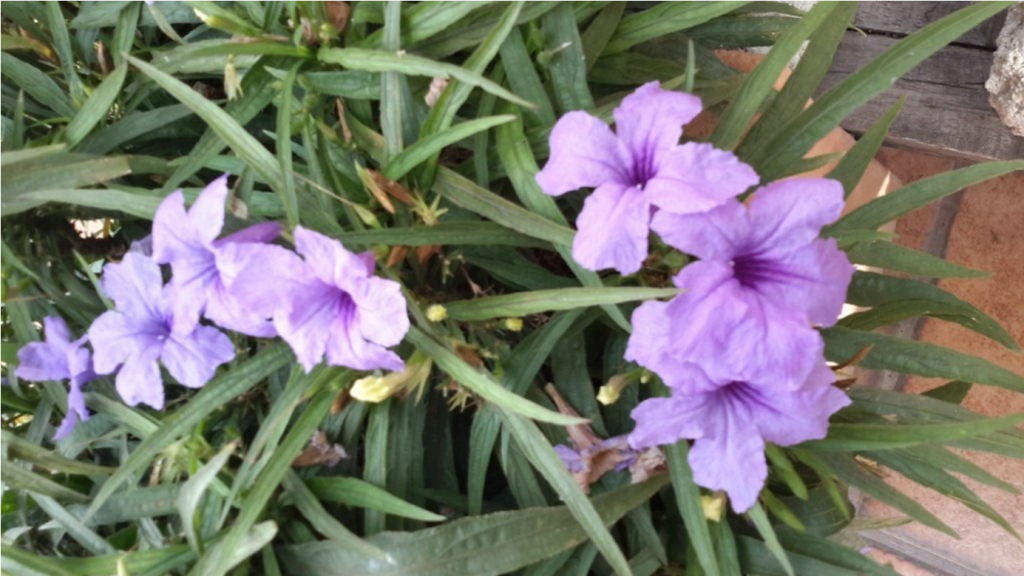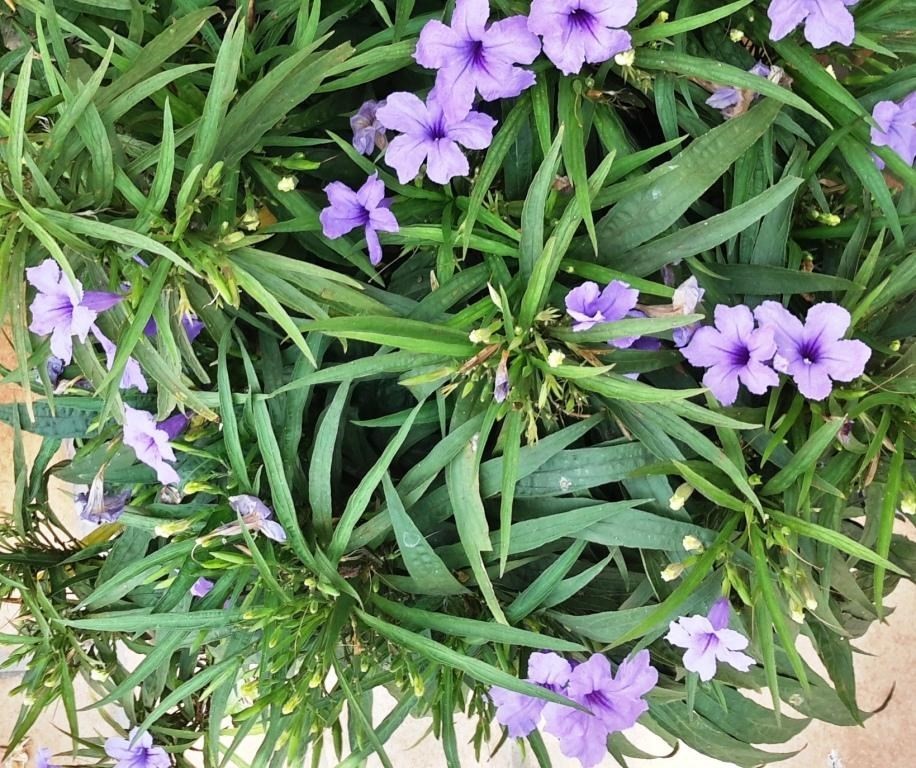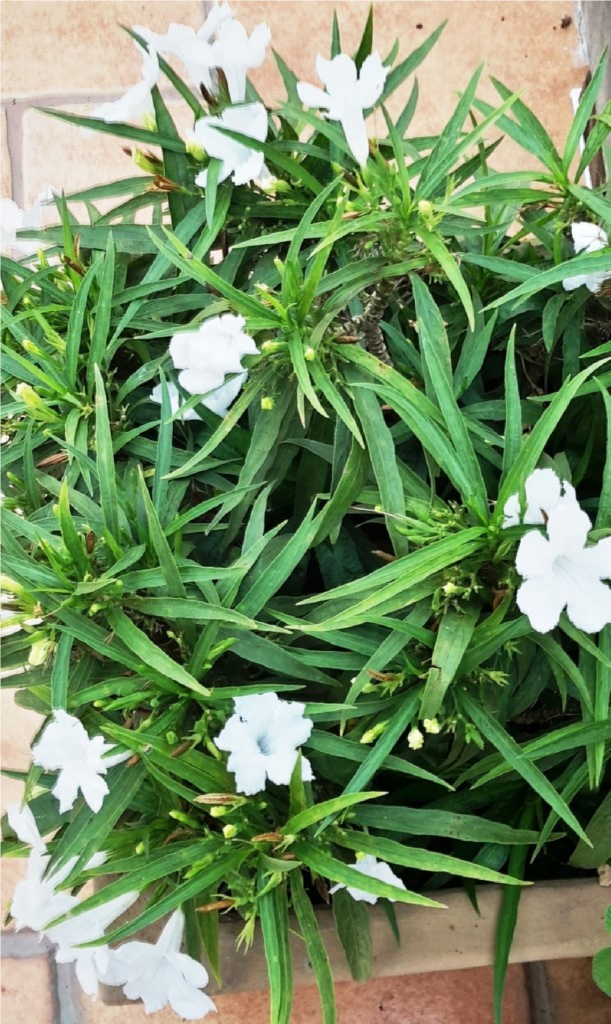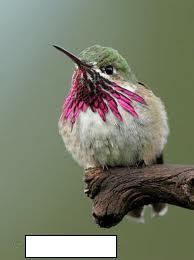By Tommy Clarkson from the November 2018 Edition
Mexican Blue Bells Ruellia Tweediana
Family: Acanthus, also known as: Spanish Ladies, Desert
Petunia, Florida Bluebells or Mexican Petunia
I’ve healthy specimens of all three of this species’ primary colors blue -violet, pink and white gloriously thriving right inside our wrought-iron entryway. Because of their location, as I get into and out of our car, they are among the first of our extended plant family I see. And they generally make me smile!
According to Robert Lee Riffle, in his masterful tome, The Tropical Look (An Encyclopedia of Dramatic Landscape Plants) these also come in yellow, red and blue. He further informs us that the Ruellia genus is comprised of “about 150 species of evergreen, perennial herbs, shrubs and sub-shrubs (with oppositely arranged leaves, having five-lobed, trumpet-shaped flowers, although some species have more exotically shaped flowers with curved, asymmetrical corollas and long-protruding stamens. (However) many species are rather weedy in appearance . . . but many others have attractive flowers in colors of every hue in the rainbow.”
Considered an evergreen sub-bush, they originated in South America. Blooming in the warm months, that’s pretty much all the time down here! Like so many tropical flowers, they require sandy, well-draining soil and morning tofull sun.
Their colorful, funnel-shaped flowers sometimes display a throat of red but I’ve not known any to complain of soreness in that area, nor display any signs of laryngitis! (A little I know, very little plant health humor there!)

The Mexican Blue Bells has five-lobed, trumpet shaped flowers, although some species have more exotically shaped flowers.
Its flora petal tips are two to four inches (5.08-10.16 cm) long, shallowly two-lobed and peduncle. (That last word means that it is the main stalk of the inflorescence to which the flowers are attached, i.e. a rachis.) Its leaves are narrow to broadly lanceolate and up to seven inches (17.78 cm) long. The stems are, occasionally, black in color.
While the flower shapes are virtually identical on my plants, the length and width of the leaves vary considerably. But, following extended perusal of my various botanical books, I understood better these differences. For example, Kirsten Albrecht Llamas points out an interesting fact in her excellent book Tropical Flowers (A Guide to Identification and Cultivation) – that she not only researched and wrote, but for which she also took the photographs.
She stated that “it has not been resolved if R. malacosperma from North America, (this, so named, species) R. tweediana, and R. brittoniana are variations of the same species, natural hybrids or close relatives. The form referred to as R. malacosperma has broader, lanceolate leaves and white flowers in cultivation. The considerable variation may also be due to hybridization with R. ciltiflora which overlaps the territory of these species.”
There are various “shirt tail relations” that have attractive flora as well, such as the light purple colored, Wild Petunia (R. lacteal), reddish in color Trailing Velvet Plant (R. affinis), pink Monkey Plant (R. makoyana), R. Macrantha of dark red or light pink melding into gold (depending upon which authority one chooses to believe, as I’ve seen pictures and write-ups of both in authoritative publications) or the mauve colored R. Tuberosa, which is used in both folk medicine and as a natural textile dye.
I recognize that we’ve bounced around with different species of this genus. My intent was not to confuse you. But virtually all of these have delightful similar in appearance flowers, and I, wished you to recognize that, just in case you can’t find one species, another might do just as well!
In Neil Sperry’s Complete Guide to Texas Gardening, he asserts that Mexican Petunia (as he chooses to call them) is an “old fashioned plant often found along driveways or walks at abandoned home sites.” He further warns that they need “to be contained by walk or edging, otherwise (they are) somewhat invasive. (They need “ample moisture or will wilt badly (and are not really) a showy plant, but a dependable and durable performer.” So how can we encapsulate a description of the Ruellia tweediana?
How about this? It is a beautiful flowering, low-growing perennial with long, narrow, glossy green, foliage, growing from one to three feet (30.48-91.44 cm). Its semi-woody stalks grow in an upright pattern producing bright, vibrant, trumpet-shaped blossoms that flower throughout our seasonally warm environs. The Mexican Blue Bells is in my opinion anyway rather showy when in bloom and can be a delightful allure for attraction of butterflies and birds. On top of all that, this shrub will naturalize and re-seed in moist areas of your garden!
The full edition or view it online
—
Tommy Clarkson is a bit of a renaissance man. He’s lived and worked in locales as disparate as the 1.2 square mile island of Kwajalein to war-torn Iraq, from aboard he and Patty’s boat berthed out of Sea Bright, NJ to Thailand, Germany, Hawaii and Viet Nam; He’s taught classes and courses on creative writing and mass communications from the elementary grades to graduate level; He’s spoken to a wide array of meetings, conferences and assemblages on topics as varied as Buddhism, strategic marketing and tropical plants; In the latter category he and Patty’s recently book, “The Civilized Jungle” – written for the lay gardener – has been heralded as “the best tropical plant book in the last ten years”; And, according to Trip Advisor, their spectacular tropical creation – Ola Brisa Gardens – is the “Number One Tour destination in Manzanillo”.





